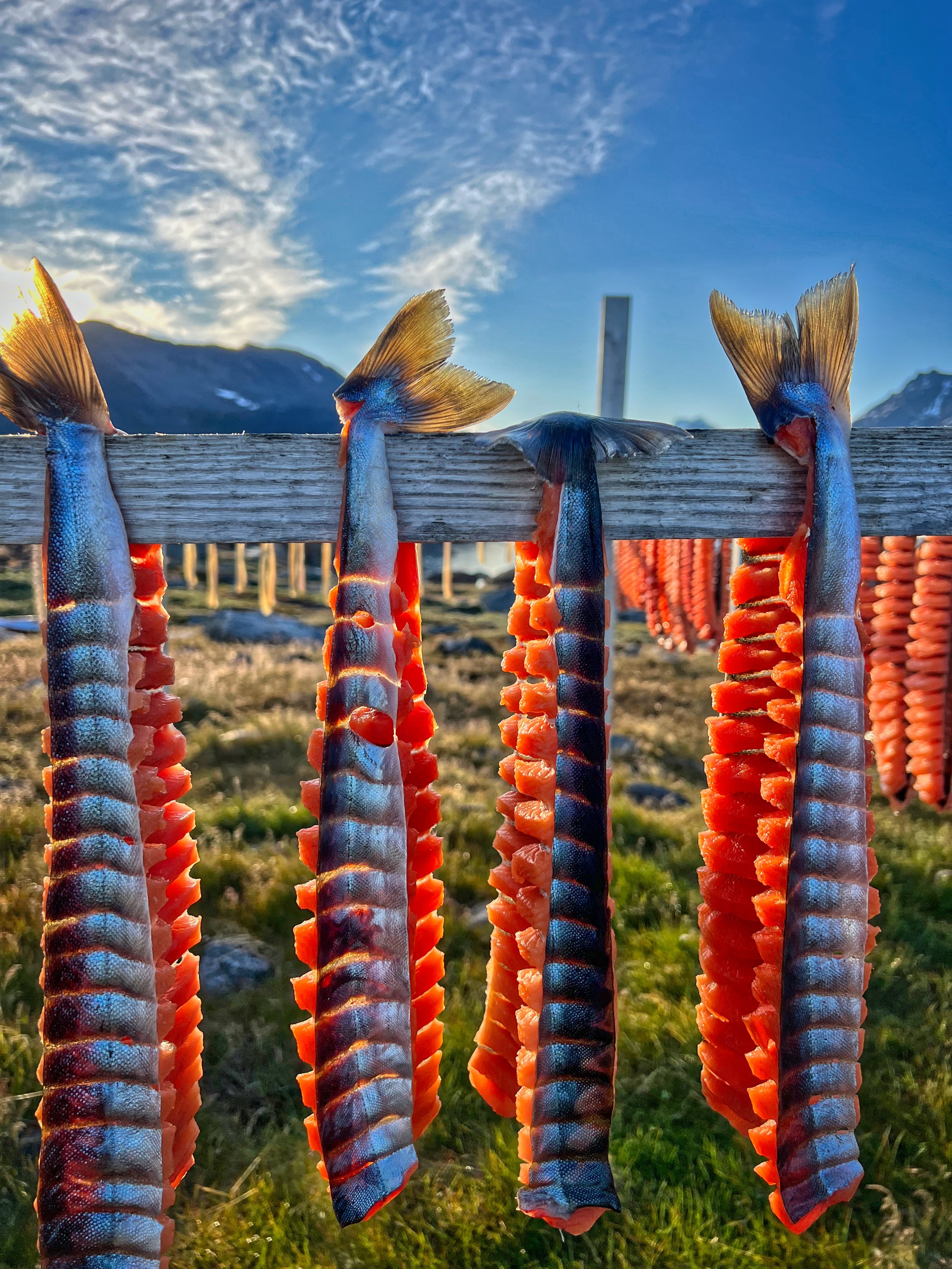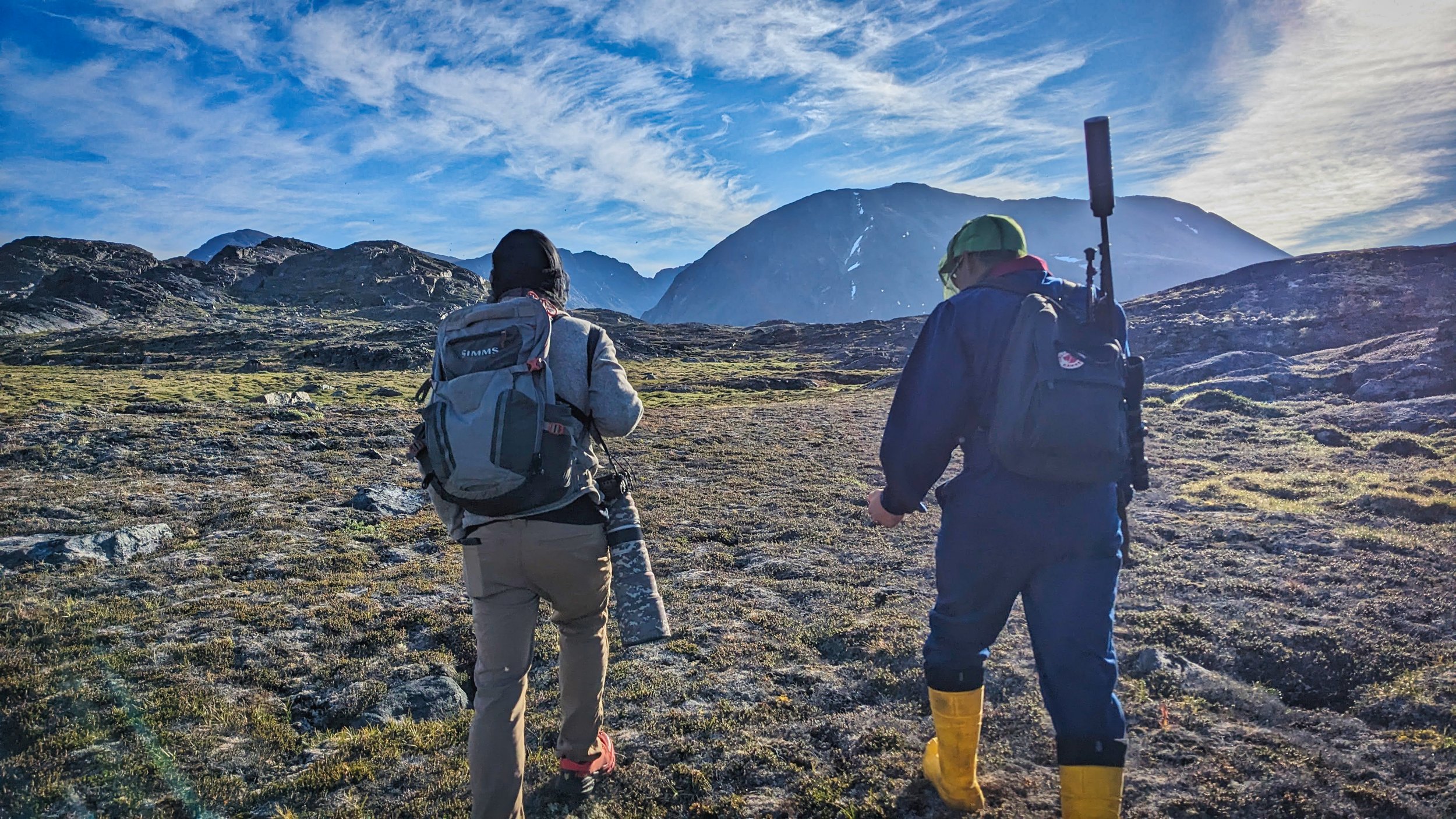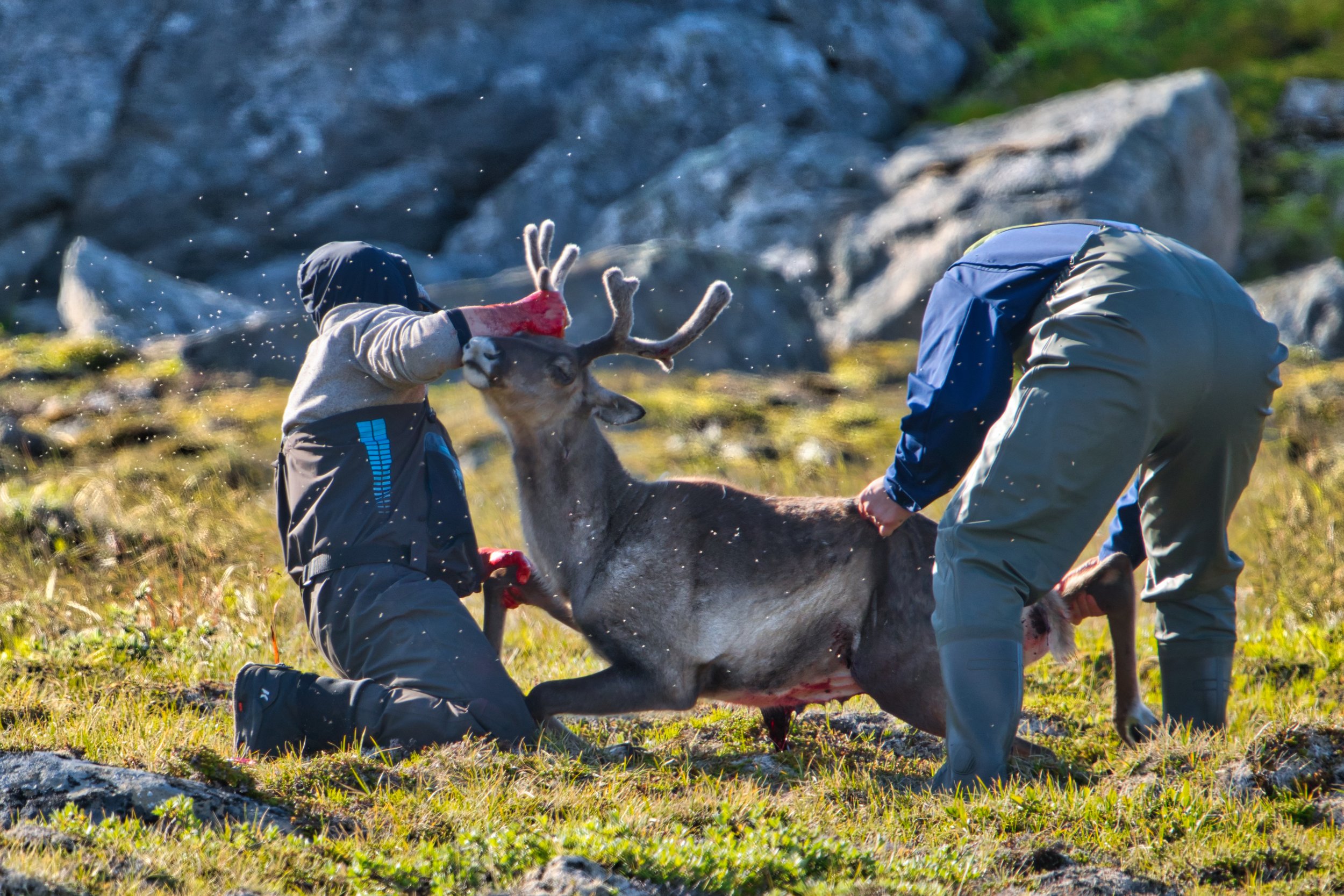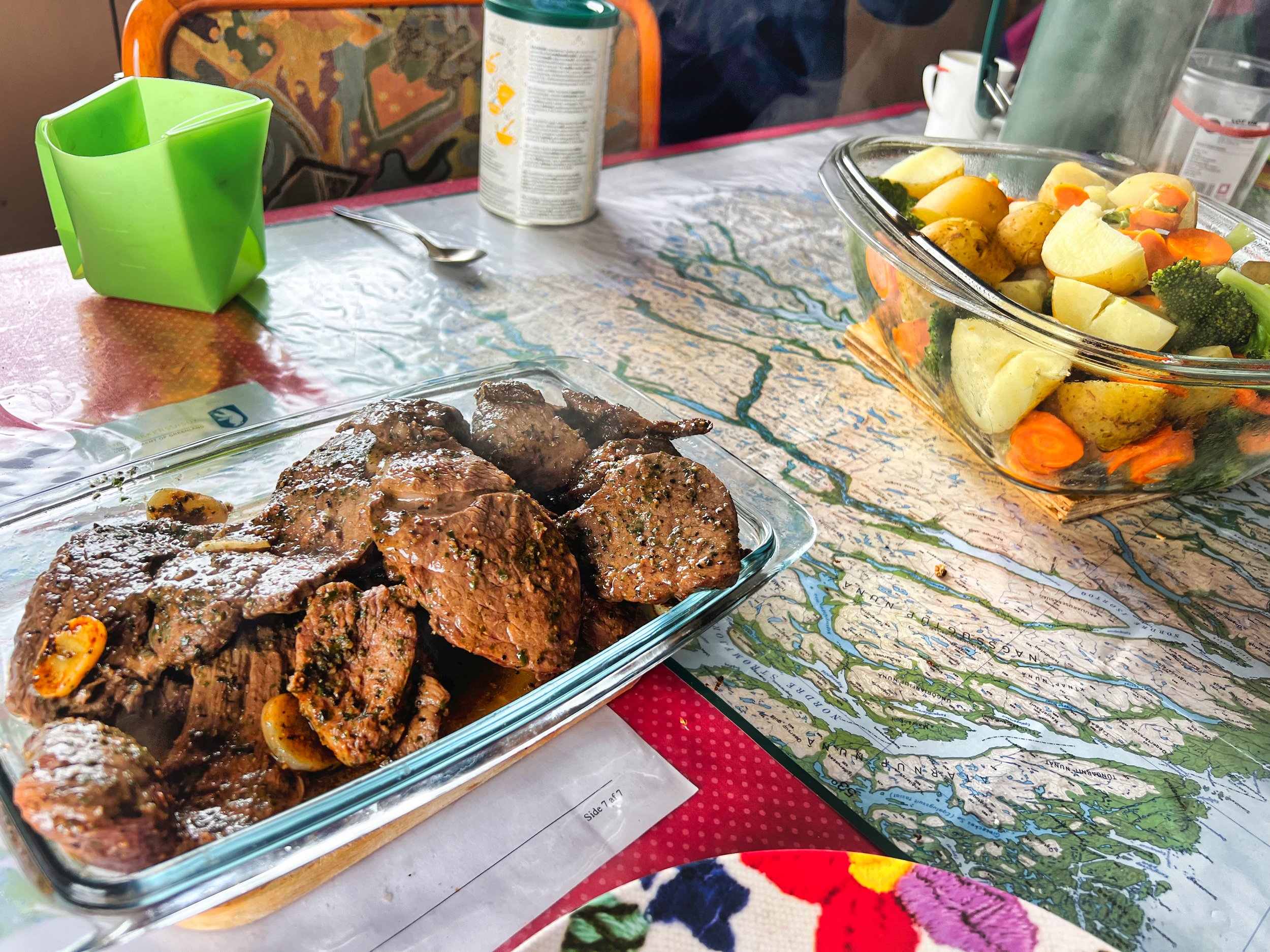arctic char fishing
Arctic Char have long captured my imagination. For year’s I dreamed of pursuing this species above the Arctic Circle. I especially have always wanted to catch them in their beautiful fiery orange spawning colors. After considerable research and savings I finally pulled the trigger on a late summer trip to the west coast of Greenland to pursue them. In this blog I thought I discuss how I decided where to target Arctic Char, my experiences in Greenland pursing them, and provide tackle (both spinning and fly fishing) recommendations for those wanting to make the trek themselves.
Where to find arctic char?
Arctic Char are a circumpolar species that can be found in virtually every country that borders the Arctic Ocean. In many places their range overlaps with other species of similar looking char species although hybridization remains rare. In some parts of their range they are anadromous spending the summers in saltwater feeding and returning to freshwater rivers and lakes in late summer to spend the fall, sometimes to spawn, and winter before departing for the salt again the following spring. Unlike salmon they do not die after spawning and fish can complete this migratory pattern many times in the 8-15 year life. Other populations are stream or lake resident and complete their entire life cycle in freshwater.
A map from Taylor, E. 2006. The Arctic Char complex in North America revisited. Hydrobiologia, Dec. 2016.
In North America, especially in Alaska, they are often confused with Dolly Varden which are the dominant anadromous char in the state. Alaskan Arctic Char populations are primarily land-locked occupying river and lakes in the Alaskan peninsula and North Slope. Arctic Char are widespread across Canada, Greenland, Iceland, Norway, Sweden, Finland, and Russia. At least one introduced population can be found in Colorado in Dillon Reservoir from a 2008-2015 stocking program. Opportunities to target large Arctic Char well south of the Arctic Circle exist on Sweden’s large glaciated lakes, Vattern and Vanern, in the south of the country.
the why of where?
There are many places to target Arctic Char. Deciding where proved to be a challenging. My goals were to catch Arctic Char in their bright orange spawning colors and to catch them above or very near the Arctic Circle. I also wanted to target anadromous fish rather than land locked fish. In short I wanted an authentic Arctic experience while fishing for sea-run Arctic Char. This eliminated the primarily land-locked populations in southern Sweden, Iceland, Colorado, Lapland, and Alaska. Additionally I was on a bit of a budget so chasing giant Arctic Char on the Tree River with Plummer’s Lodge and other similar luxury fishing resorts where a several days fishing would set me back $10-12K USD was simply beyond what I could afford. I had no interest in considering Russia for a variety of practical and political reasons. This left the Nunavet territory in Canada and Greenland.
A buck Arctic Char caught on a spinner.
The next decision was whether to self guide or go with an organized lodge. Self guiding in Greenland was not going to be possible as fishing rights for char in freshwater are strictly regulated. Self guiding my way to char in Nunavet to places like Cambridge Bay, Kugaruuk, or Iqaluit seemed possible and I reached out to Bunk of “Bunks Outdoor Angle” who blogs frequently about chasing Arctic Char in these locations. After speaking with him and crunching numbers for flights, accommodations, and ATV rentals it was clear that even self guiding was going to cost a substantial sum of money. Additionally, there was greater uncertainty about the timing of Arctic Char runs in these locations and in most of these locations relied on catching these fishing as they made their way past these small Inuit communities on the way to their wintering lakes. There was much more certainty about the timing of fish arrival in Greenland and better prospects of catching colored up fish. However, another issue arose when contacting various fishing camps on the island as most would not allow for spinfishing and catered exclusively to fly anglers. This wasn’t born out of any regulations implemented by Greenland authorities but simply because they felt their clientele would not appreciate sharing the water with non-fly anglers (cue the eye roll). Fortunately I stumbled upon a small Inuit run fish camp called West Greenland Wildlife that was supportive of allowing spin, fly, and tenkara fishing. Leif and Agathe, the owners of West Greenland Wildlife, approach is more “hands off” and they were open to allowing us to wander off and fish on our own. We would basically be paying for transport to and from camp, food and lodging, and fishing access. What’s more their prices were reasonable and the amount of time provided to fish was significantly longer, 8 days, versus most of the other fish camps that provided only 3 to 5 days of fishing. This all sounded perfect to us so we booked an early August trip with in 2024.
Greenland Logistics & Planning
Flying low over the Greenlandic ice sheet is a very memorable experience.
We were to meet Leif and Agathe in the small town of Sisimiut in western Greenland. Getting to Sisimiut, Greenland from North America is not easy. There are two flight options. First is to fly via Iceland to Nuuk (the capitol of Greenland) and then on to Sisimiut. These flights only occur every 3 days. If there is any sort of flight delay or cancellation (a frequent occurrence) on this route odds are you are going to miss half your trip or more. We instead opted to fly to Copenhagen, with Iceland Air, and then on to Sisimiut, Greenland, with Greenland Air. There are daily flights from Copenhagen to Sisimiut via Kangerlussuaq. In this we way had more flexibility in travel dates and also if something went wrong we’d have more options to get to Sisimiut. We also booked a few buffer days in Sisimiut on each end of our stay with West Greenland Wildlife. We found an affordable AirBnB in Sisimiut and the town is very walkable so you don’t need a rental car. Taxi rides from the airport cost about $20 USD.
Sisimiut
We had a few days to explore the town of Sisimiut. The city sits on a hilly peninsula overlooking Baffin Bay. The surrounding waters hold large numbers of Atlantic Cod that can readily be caught from shore. We found large numbers of cod staged under the Asummiunut Bridge (the only bridge in town) during the outgoing and incoming tides. You can catch fish after fish up to 10 lbs here from shore on jigs with plastics. We used a 9’ MH travel rod from GoTure that worked perfect for these fish. A size 4000 reel spooled with 30 lb braid with 12 lb fluoro leader is enough to handle the fish and the rocks. Jigs from 1/2 oz up to 1 oz are ideal and we did particularly good with Lancer Jigs in copper and silver. Additionally, the rocky shore leading out to the oil storage tanks provides excellent cod fishing and is probably one of the easiest places in the world to catch large cod on the fly from shore. Fishing licenses can be purchased at the Tele-Post office in town.
A sled dog and the ever present biting insects.
There are several museums and hiking trails worth checking out around the town of Sisimiut and a visit to “Dog Town” east of the city is worth it. Dog Town is where the residents of Sisimiut keep their sled dogs and there are several hundred dogs kept here. Drying cod, reindeer, and seal meat can be seen hung in storage areas to feed the dogs. The aroma of several hundred dogs and all the meat is a bit overwhelming, as are the biting insects, but it is still a unique experience worth doing.
Before meeting up with Leif and Agathe for the boat ride to camp we did some shopping at a few of the local grocery stores. The Pissifik and Brugseni were the best stocked stores in town. Here we were able to buy food to prepare at our AirBnB including supplies to cook the cod we caught. Additionally, we bought snacks (chocolate, granola bars, dried fruit etc…) to have at the fish camp and alcohol. Food prices were slightly higher than what we pay at home but alcohol prices are substantially higher.
Sassannguit
We met Leif and Agathe Fontaine at the Sisimiut marina and loaded our gear and provisions aboard his boat for the 40 mile ride to the fish camp at the mouth of the Sassannguit River (Google map of the camp here). The boat has a comfortable cabin and despite high winds Leif expertly guided the boat through the narrow marine inter-island passages affording a rather pleasant albeit slow boat ride in poor weather. It took a few hours to reach camp and we arrived later than expected. Leif checked the nets deployed in front of camp and came back with a few fresh Arctic Char that were going to be our meal for the night. A simple boiled char and potatoes with broth was served that proved absolutely delicious.
We squared away our gear in a large round tent that came complete with muskox rugs, cots, and a kerosene heater. A bitterly cold Arctic wind blew outside and with temps in the upper 30’s we quickly fired up the heater and after prepping our fishing gear for the next day we jumped into our warm sleeping bags. I was eager to catch some shuteye and be well rested for my first day of Arctic Char fishing.
The Fontaine’s have been coming to this fish camp for generations. Here they use nets and fish traps to catch Arctic Char bound for the Sassannguit River and it’s lake system. They dry, salt, and smoke char for their own personal use and also for trade. All of this harvest activity takes place near camp at the river mouth. During our stay we regularly ate char and Agathe’s cold smoked char was among my favorite foods to eat for breakfast and to bring along as a pack lunch served on dark rye with a thick slice of cheese.
Arctic Char Fishing: The Good Place
A beautiful fresh from the ocean Arctic Char.
The next morning I woke at around 5 AM. Sidra, my wife, was comfortable in her warm bed so I got her coffee started and slipped on my waders and made my way about 1/4 mile upstream from camp. In the lower 2 miles of the river it tumbles over small waterfalls and big boulders creating numerous pools and pocket water that will all hold Arctic Char. It didn’t take long to find my first char on a bright pink and red Daiwa spoon. Then I caught another and another and another. Almost every cast had a fish follow or some sort of contact either a strike or a fish hooked and landed. These fish in the lower river are freshly returned from the ocean and mostly chrome with buff colored spots. A few fish were just getting a tint of orange along the belly and jaw line. What surprised me most was just how formidable these fish were. They jump and make drag screaming runs. They also make full use of the river’s powerful currents. Of course this was just a precursor of what was to come. I headed back to camp for breakfast eager to fill my belly and set out for a day’s fishing.
Sidra and I set out after breakfast and started working our way up river. Along the way we caught so many fish we lost count. Spinners with some orange, red, or pink in them proved more effective than spoon or spinners with darker blues or purple. After working about a 1/2 mile of the lower river we decided to make the long 3 mile hike up to the delta below the first major lake. This area called “The Good Place” by the Fontaines is where large numbers of brightly colored char gather in the deep, wide, and slow moving pools. It didn’t take us long to start catching some brightly colored fish. Average fish size was greater here as well with several fish in the 7 to 8 lb class caught by each of us. Progress upstream was slow simply because we were catching 10 fish or more per person in each pool. It was without a doubt the most unreal fishing I’ve ever experienced.
On our way to Greenland we spent a week camping in Sweden and we had brought our camping gear with us to the fish camp. We decided on the long hike back that we would return and camp at “The Good Place” in our tent. In this way we could spend a full day fishing the pools in hopes of catching bigger colored up char. The next morning we went along on a successful Caribou hunt (see below) with Aqqalukkuluk Fontaine, Leif & Agathe’s son, and enjoyed a delicious caribou steak dinner. After dinner we set off to hike and camp under a midnight sun. After setting up our remote camp I quickly got to work catching char after char on foam flies. It was absolutely amazing watching these char come up and smash bright orange foam flies on the surface. I must have caught 30 or more char on the surface before calling it a night including several of the smaller resident “river char” that are bright gold.
The next day I had two primary goals. One was to catch a large colored char swinging streamers and the other was to catch char using a tenkara rod. I started off swinging a Coho comet fly in the upper end of the pool above our campsite. A few casts in I hooked a monster brightly colored buck. Over the next hour I pulled out several more large fish swinging streamers before I switched to drifting a big bright orange stone fly pattern on the tenkara rod that put one of the prettiest fish of the trip in the net. Next I had Sidra try skimming foam flies on the tenkara rod. It was an absolute hoot watching these fish smash big mouse flies right at your feet.
We finished the day stripping foam flies in deeper boulders fields and then finally back to throwing spinners. Having miles of unpressured stream filled to the brim with hungry char was amazing. We caught countless almost obscene numbers of fish. The time eventually came that we had to break down camp and start making the long hike back to camp. On the way back we picked a few more choice pools to stop and catch a few fish from before saying goodbye to “The Good Place”.
A bright green hen to wrap up the trip. They were quite eager to smash this bright green flashy streamer drifted or twitched back up stream.
We gave the fish and ourselves a break for a day to do some hiking. On our last full day we explored some of the lower river sections we had bypassed earlier in the trip. This area of the river is characterized by greater elevation loss, waterfalls, deep plunge pools, and fast moving water in rugged boulder fields. We decided to just bring along the tenkara rods. We found fish harder to come by but eventually started to pick apart which water was likely to hold fish. I found several long deep runs that produced five or more fish each on a flashy green streamer each while Sidra mostly struggled to connect. Most of the fish here were fresh from the ocean and more chrome than colored up but I found a couple brightly colored bucks, a bright green hen, and several resident golden river char. That evening we enjoyed a delicious musk ox roast and red wine with our hosts. It was a delicious and fantastic end to a trip of a lifetime. The next morning we broke down all of our fishing gear and made the trip back to Sisimiut stopping at a nearby seal hunting village on the return.
Not Just A Fish Camp But An arctic Experience
One of the great benefits of staying with West Greenland Wildlife is that its as much a cultural experience as a fishing experience. The camp itself if a subsistence char fishing camp that has been in operation for generations. In addition, we had the opportunity to go on a caribou hunt where Aqqalukkuluk successfully dropped a Caribou about a 1/2 mile from camp and even allowed me to gut, cape, and quarter the animal in the field. We also joined him on a hike to harvest a local celery type plant and other plants and roots they use for cooking and tea making. For meals we ate primarily local game including caribou, musk ox, char, and more. In addition, we saw several small herds of Caribou, Arctic Fox were regularly seen in camp, and we saw many seals, eagles, and other wildlife. We met several fly anglers at the airport when we were leaving and they had far less richer experiences. Not only did they catch far fewer fish but they also fished more pressured rivers and didn’t have the rich cultural experiences we had.
Suggested Gear and Tackle
This is by no means an exhaustive list but should be helpful for the spin or fly angler planning to visit Greenland for Arctic Char. I gleaned most of my information by watching various videos and reading blogs from Arctic Char fishing adventures across the globe and looking for common themes. Despite visiting in early August temperatures were mostly cool to cold and it had snowed the week before we arrived.
Spin Fishing Tackle Suggestions for Arctic Char
Fishing rods: Spinfishing 6’6 to 7’6” Medium or Medium-light spinning, 3 piece travel rods with two tips (like this one) are the best option here in case you break a tip, want to throw heavier gear, and it gives you a backup tip
Reels: Size 2000 to 3000 spinning reels spooled with 15 lb braid and 8 fluoro leader OR you could do straight 8 lb fluoro or mono.
Landing net: Take care of these long lived fish and a use a net. I use this travel one from KastKing.
Waders & wading boots: Felt is allowed in Greenland. The boulders are very slippy here.
Pliers for pinching barbs and scissors for line cutting
Assortment of spinners, spoons, and jigs in bright orange, pink, and red:
Blue Fox Vibrax Spinners in Size 3 Orange & Pink
Little Cleo 1/4 oz spoons in brass and red or orange
Hawken Wooly Bugger Jigs for twitching
Fly Fishing and Tenkara Tackle Suggestions for Arctic Char
Fly Rods: A 9-10’ 5 or 6wt is more than enough for these fishing. I used an Echo Carbon XL Rod 9' 5 wt -
Fly Rods & Lines: I matched my rod with a Nirvana Click/Pawl Reel 4/6 wt spooled with Commando Smooth Integrated Skagit Head & Running Line and Airflo Intermediate Sink 8' Clear Tip from there I just tied on a few feet of 8 or 10 lb fluoro leader.
Tenkara Rods & Lines: I use a Tenkara USA Ito Zoom Rod fished at 15’ most of the time and fish with 4.5 level line in orange. For leader I used 10 lb fluorocarbon.
Landing net: Take care of these long lived fish and a use a net. I use this travel one from KastKing.
Waders & wading boots: Felt is allowed in Greenland. The boulders are very slippy here.
Pliers for pinching barbs and scissors for line cutting
Most productive fly patterns:
If you have any additional questions please feel to reach out me at spiltmilt AT gmail.com. Many of the links included in this blog are affiliate links (Amazon, Avant) and I get monetary benefit from their use. Happy fishing adventures to you in the Arctic or where else your piscine pursuits take you.


























